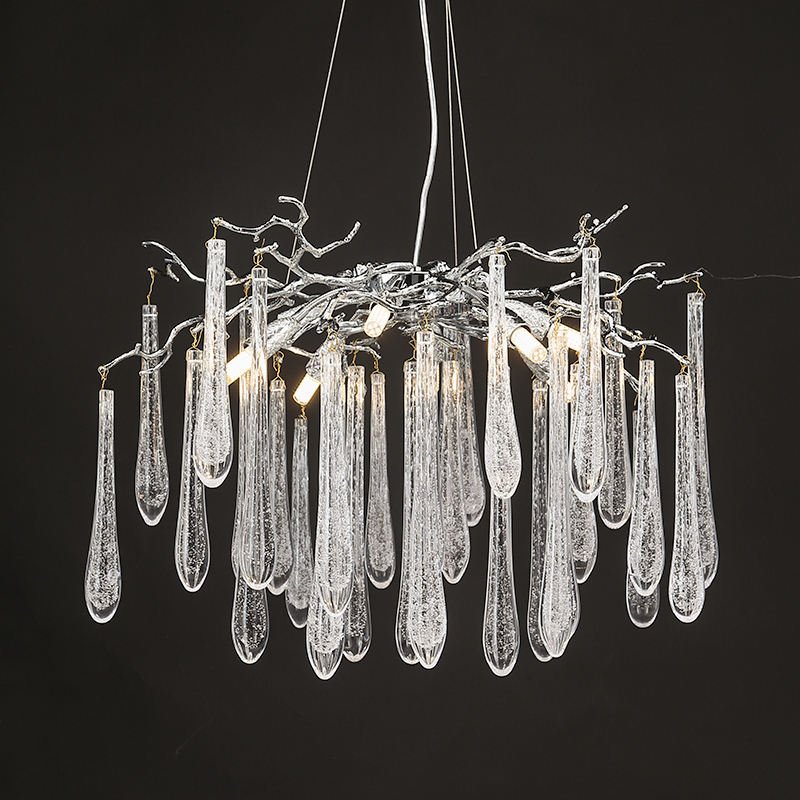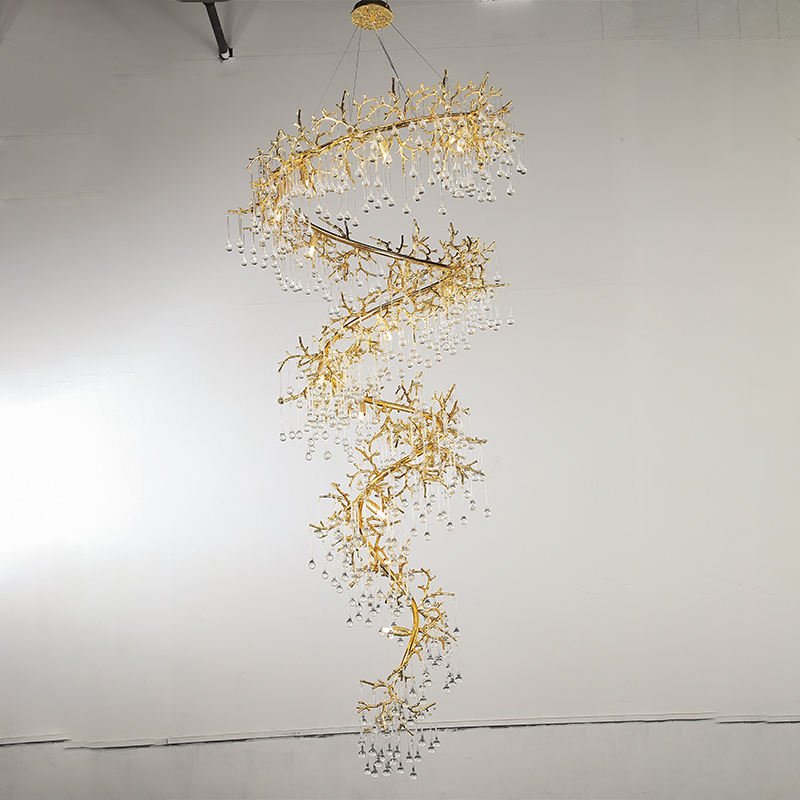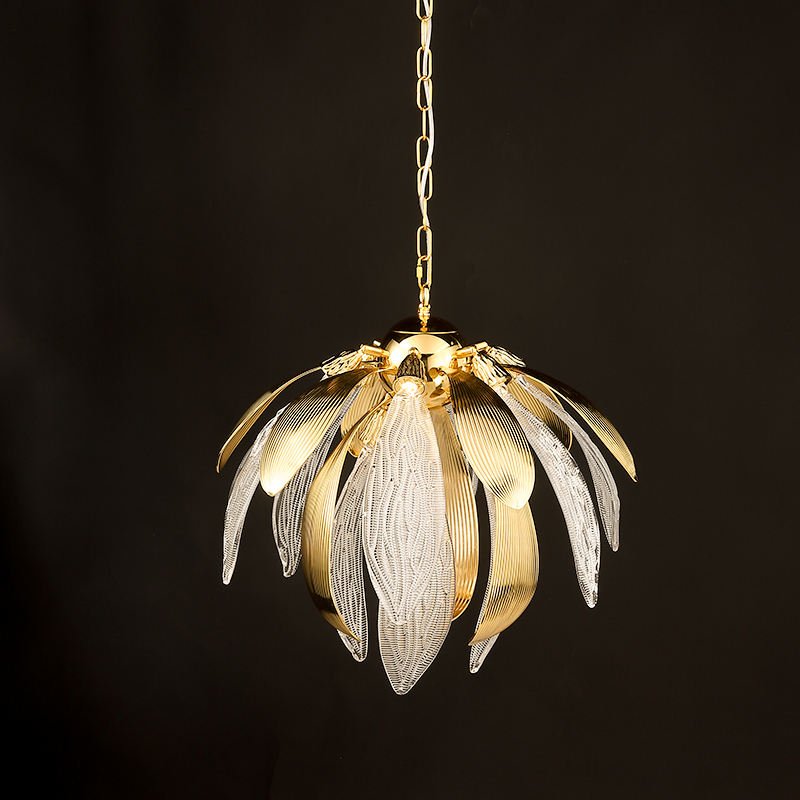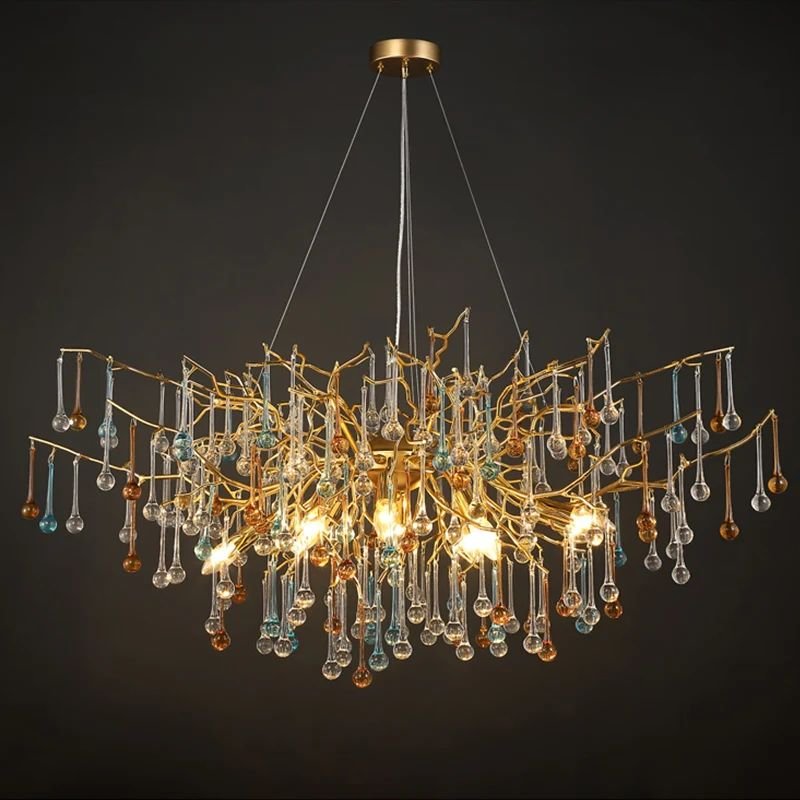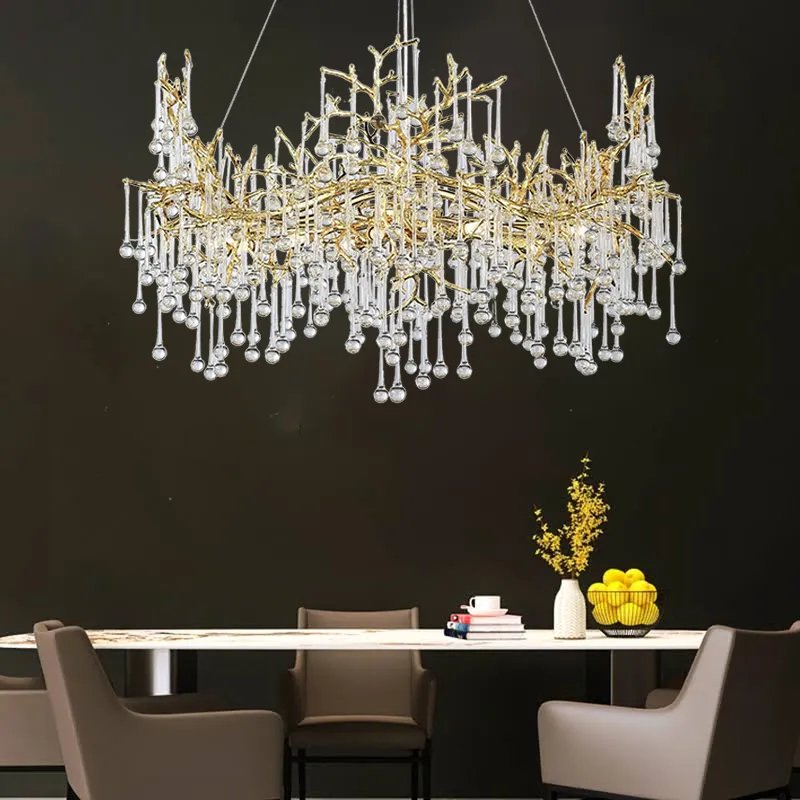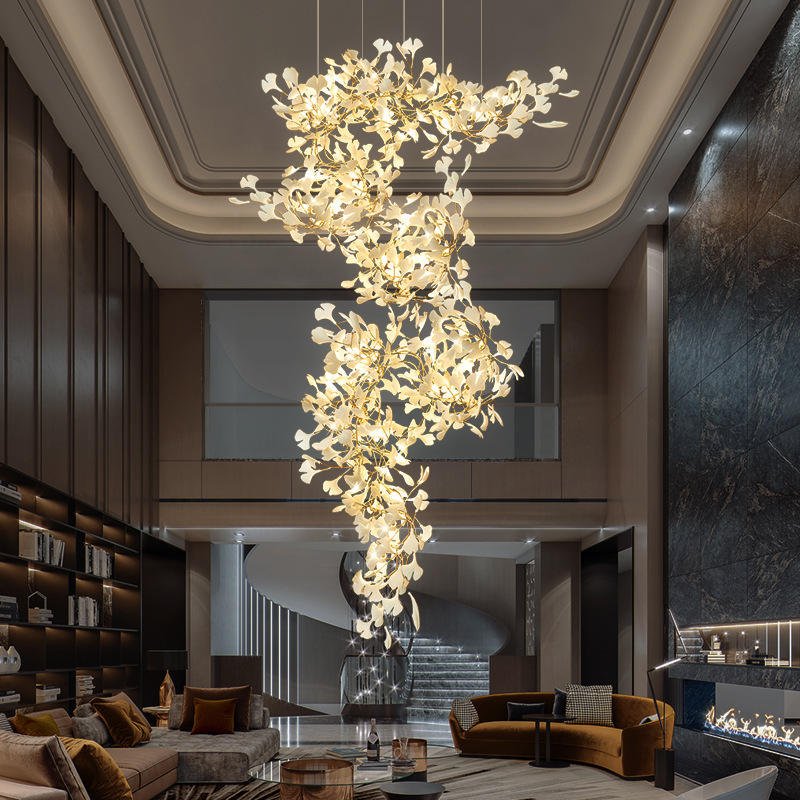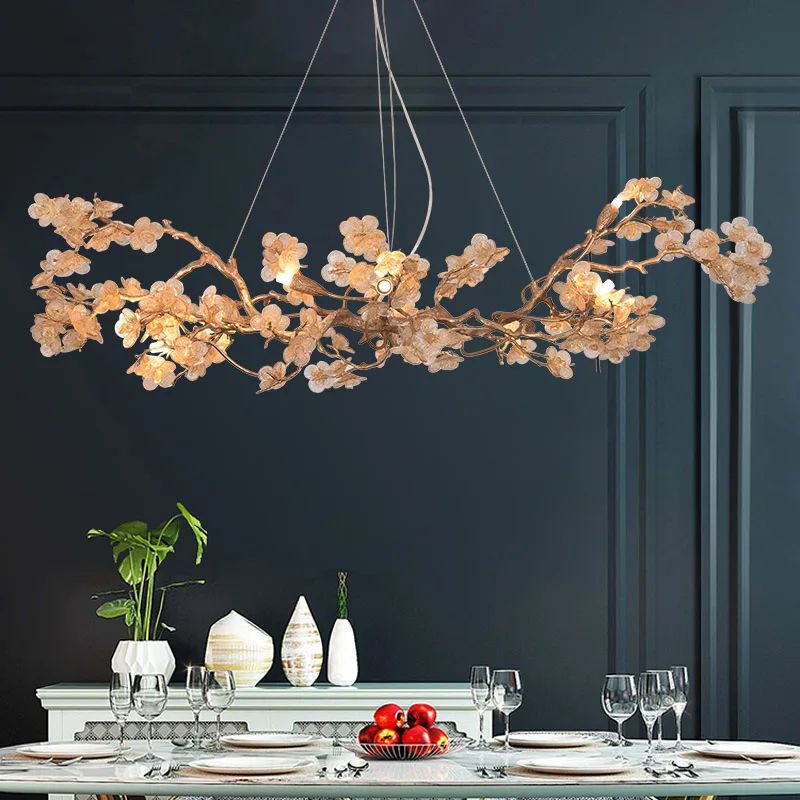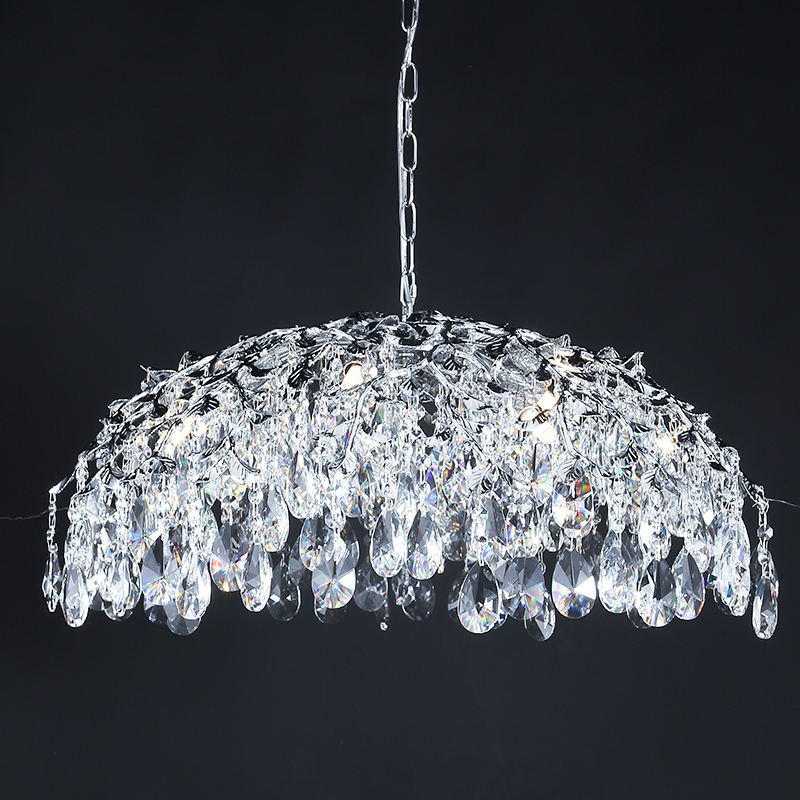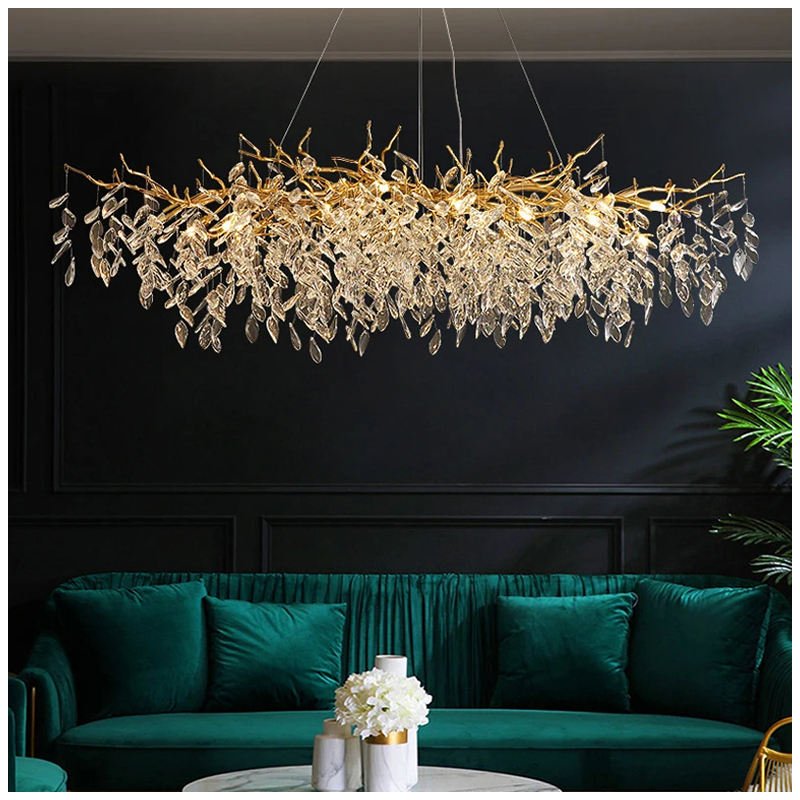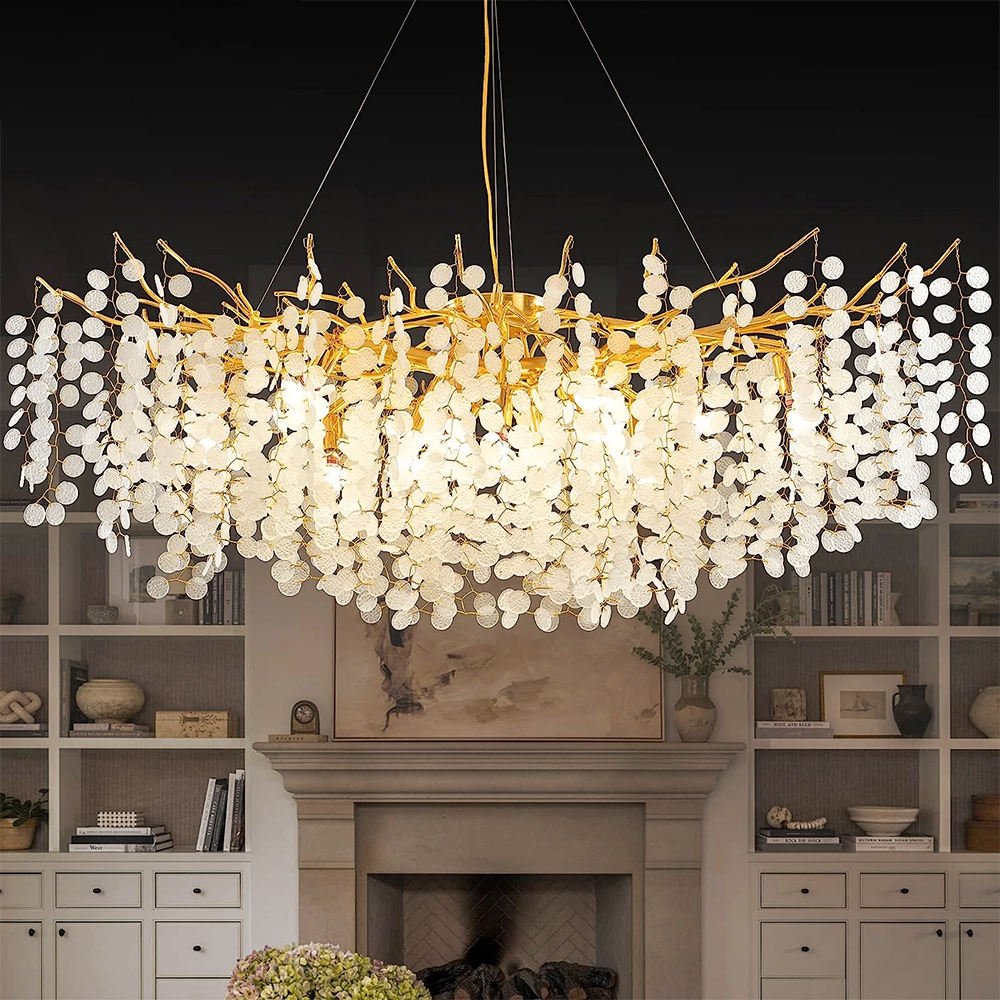Key Takeaways:
- • What They Are: Branch crystal chandeliers mix nature shapes (branches) with sparkly crystals.
- • Why They’re Popular: They bring a bit of the outside in, feel kinda natural but also super elegant. Fit lotsa styles.
- • Types: Comes in loads of finishes (gold, silver, black), crystal shapes (sharp, smooth, colored), and branch designs (simple, twisty, flowery).
- • Where to Use: Great for dining rooms, living rooms, entryways – places you wanna impress. Need decent ceiling height usually.
- • Size Matters: Gotta get the size right for your room, not too big or too small.
- • DIY? Possible, but tricky. Need skills and care, especially with wiring. Safety first!
- • Cleaning: Needs regular dusting, sometimes careful wiping with special cleaners. Can be fiddly.
What exactly makes a branch crystal chandelier so stunning anyway?
So, you’re looking at lights, yeah? And these branch crystal things catch your eye. What’s the big deal? Well, first off, what is it? It’s basically a light fixture shaped like tree branches, could be just a few or a whole complex tangle, usually made outta metal. Then, hanging off these branches, or sometimes embedded in ’em, you got crystals. Lots of ’em. And that’s kinda the magic right there. It’s this mix, this contrast, that gets people. You got the organic, natural kinda vibe from the branches – something earthy, maybe a bit wild. Then bam! You hit it with the crystals – pure sparkle, total glamour, kinda fancy. It’s like wearing hiking boots with a sequin dress, but somehow… it works?
But it ain’t just about looks when it’s off. What happens when you turn it on? That’s where the stunning part really kicks in. The light bulbs, often hidden amongst the branches or designed to look like part of it, shine through and onto the crystals. And crystals, well, they love light. They grab it, bend it, split it into colors sometimes (depends on the crystal type), and just scatter it everywhere. So instead of just one blob of light, you get this amazing pattern across your ceiling, your walls, maybe even sparkling reflections in your wine glass. It makes the light feel alive, way more interesting than a standard ceiling lamp. It creates atmosphere, you know? Makes a room feel special.
I remember walkin’ into a client’s place once, nice house but the dining room felt a bit… boring. Standard table, chairs, plain ceiling fixture. We swapped it for this big, sprawling bronze branch chandelier with loads of little clear crystals. Flicked the switch and honestly, the room just came alive. Instantly felt warmer, more sophisticated, like somewhere you’d actually want to linger after dinner. The way the light danced around, it was proper captivating. It’s not just a light source; it’s a centerpiece, a conversation starter. It’s art you can turn on. If you wanna know more about the different looks they come in, check out this piece on exploring various styles of branch chandeliers. They really do run the gamut from subtle to full-on wow.
How’d these branch things even become popular for lights?
Right, so where did this whole branch-and-crystal light idea come from? It weren’t always a thing, obviously. Chandeliers used to be all formal scrolls and symmetrical arms, very classic stuff. But things change, don’t they? I reckon a big part of it is this whole “biophilic design” trend you hear about. Fancy word, basically just means people wanting to feel more connected to nature inside their homes. Bringing in plants, using natural materials like wood and stone, and yeah, light fixtures that look like they grew there. Check out how some designs are combining branch chandeliers with wood accents – leans right into that vibe.
So, designers started thinking, how can we make lights feel more organic? And looking at trees, branches, that kinda structure, it’s naturally beautiful, right? All those interesting lines and shapes. So they started mimicking that in metal. But just metal branches might look a bit stark, maybe too rustic for some tastes. How do you make it elegant? Add crystals! It’s that mix again – the rough-ish, natural form with the smooth, sparkly, man-made element. Suddenly, it wasn’t just rustic, it was rustic glam. It could fit in a fancy downtown apartment just as well as a cozy country house. This versatility, that’s key to why they took off. As this article on Tree Branch Chandeliers: The Growing Trend points out, they really do bring a natural elegance into modern spaces.
And let’s be honest, people like stuff that looks different, yeah? A standard chandelier is nice, but a branch chandelier? It’s unexpected. It’s got personality. It makes a statement without being too weird or “out there” for most folks. It feels kinda timeless too, ’cause nature never really goes outta style, does it? And crystals have been associated with luxury for ages. So you combine those two enduring things… boom. Popularity. I’ve seen ’em evolve too, from fairly simple designs to incredibly complex, artistic sculptures that just happen to light up. It’s a category that keeps reinventing itself, which keeps it fresh and interesting for homeowners and designers alike. They just hit that sweet spot between nature, art, and function.
Aren’t there loads of different styles? What kinds are there?
Oh yeah, absolutely loads. Saying “branch crystal chandelier” is kinda like saying “car” – doesn’t tell you much about the specifics, does it? The variety is huge, which is great ’cause it means you can probably find one that fits your particular room perfectly. First up, you got the metal finish on the branches. This makes a big difference to the feel.
- Gold/Brass: Warm, luxurious, very popular right now. Can be shiny or brushed. Looks great in traditional or glam spaces.
- Silver/Chrome/Nickel: Cooler tones, often looks more modern or contemporary. Can be sleek and shiny or have a softer, satin finish.
- Bronze/Oil-Rubbed Bronze: Darker, richer, often has a more rustic or industrial feel, but can still be elegant.
- Black: Bold, dramatic, very modern. Creates a strong silhouette.
- White/Other Colors: Less common, but you can find white for a kinda shabby chic or minimalist look, or even painted colors for something really unique.
Then there’s the crystals. They ain’t all the same either!
- Cut Crystals: Think classic chandelier sparkle. Faceted to catch and refract light like crazy. Can be different shapes – teardrops, beads, prisms.
- Raw/Rough Crystals: More natural looking, less blingy, often used in more rustic or bohemian styles. Think quartz points.
- Colored Crystals: Adds another dimension. Amber, smoke grey, pink, even multi-colored. Can really change the mood. Like that Gilded Branch Chandelier with Colorful Crystal Droplets below – proper fun.
- Glass Elements: Sometimes it’s not strictly crystal but shaped glass – leaves, flowers, icicles – that mimic natural forms and play with light. That Elegant Gold Lotus Flower Pendant Light uses glass petals beautifully.
And finally, the branch structure itself. This is where you see massive differences. Some are quite sparse, just a few elegant arms reaching out. Others are dense thickets, really intricate and busy. You get designs inspired by specific trees or flowers, like cherry blossoms or wisteria. Some spiral downwards, some reach upwards, some spread wide horizontally. There’s linear ones for over long tables, round ones for central placement. Honestly, the best way to get a handle on it is to look at pictures or browse collections like this Branch Crystal Chandelier Collection. You can really explore the various styles of branch chandeliers available. The trick, as an expert will tell ya, is matching the chandelier’s style – its finish, crystal type, and structure – to the overall vibe of your room. A super modern, chrome branch thing might look weird in a cozy farmhouse kitchen, you know?
Where’s the best place to hang one of these fancy things?
Okay, so you’re sold on the idea, but where exactly does a branch crystal chandelier belong in your house? Where’s it gonna look best? Well, the obvious answer, and probably the most common place, is the dining room. Right over the table. It becomes the focal point, makes meals feel a bit more special. That Modern Golden Branch Crystal Raindrop Dining Chandelier picture? Perfect example. It defines the dining space, adds that touch of elegance. Plus, the light reflecting off the table surface and glassware? Chef’s kiss.
But don’t stop there! Living rooms are another prime spot. Especially if you’ve got decent ceiling height. Hung in the center of the room, or maybe over the main seating area, it can really elevate the whole space. It replaces that boring flush-mount light with something spectacular. Makes the room feel grander, more inviting. Think about the style though – match it to your sofas and decor. Maybe something sprawling and gold for a classic room, or something starker and silver for a modern one.
What about entryways or foyers? Absolutely! Talk about making a first impression. If you’ve got a two-story entry or just a decent sized foyer, one of these chandeliers can be a showstopper. It welcomes guests with a bit of wow factor. Just make sure it’s high enough that tall people won’t bump their heads! Scale is important here too; a tiny chandelier in a huge entryway looks kinda sad. Go big or go home (well, not literally, just choose appropriately).
Even bedrooms can work, especially master bedrooms. Hung centrally, it adds a touch of romance and luxury. Imagine waking up to that soft sparkle. Again, scale and ceiling height are key. You don’t want something massive looming over your bed if the ceiling’s low. And maybe consider a dimmer switch for all these locations, honestly. Gives you control over the mood. Sometimes you want bright and sparkly, sometimes you want soft and glowy. I once installed a medium-sized, quite delicate silver branch chandelier in a client’s home office. They had high ceilings and big windows, wanted something inspiring but not distracting. It worked brilliantly! Lifted the whole room from just ‘work space’ to somewhere actually pleasant to be. So yeah, think beyond the obvious dining room sometimes.
How big should the chandelier be? Does size matter here?
Oh, one hundred percent. Size absolutely matters when you’re picking out a chandelier, especially something as eye-catching as a branch crystal one. Get it wrong, and it just throws the whole room off balance. Too small, and it looks kinda pathetic, lost in the space. Like a tiny little twig trying to impress in a massive forest. Too big, and it completely overwhelms the room, makes the ceiling feel lower, and might even feel a bit… aggressive? You gotta find that Goldilocks zone – just right.
So how do you figure that out? There’s a couple of handy rules of thumb designers use. For the diameter (how wide it is), a common trick is to measure the length and width of your room in feet, add those two numbers together, and that sum in inches is a good starting point for the chandelier’s diameter. Say your room is 12 feet wide and 16 feet long. 12 + 16 = 28. So, you’d start looking for chandeliers around 28 inches wide. It’s not exact science, mind, just a guideline. If you’re hanging it over a dining table, another rule is that the chandelier should be about 1/2 to 3/4 the width of the table, and definitely not wider than the table, otherwise people might bump it.
Then there’s the height. This mostly depends on your ceiling height and where you’re hanging it. Over a dining table, you generally want the bottom of the chandelier to be about 30-36 inches above the tabletop. This keeps it out of sightlines when people are seated but low enough to feel connected to the table. In a living room or entryway, you need enough clearance for people to walk underneath comfortably. Aim for at least 7 feet from the floor to the bottom of the fixture, more if you have higher ceilings. For really tall ceilings (like two-story entries), you can go for much larger, taller fixtures, like that Cascading Floral Spiral one maybe, to fill the vertical space.
Now, here’s a bit of expert advice: these rules are great starting points, but also consider the visual weight of the chandelier. Some branch designs are really airy and open, lots of space between the branches and crystals. These might look smaller than they actually are, so you could potentially go a bit bigger than the formula suggests. Others are really dense and complex, packing a lot of visual punch. For those, you might want to stick to the smaller end of your calculated range, or even go a tad smaller, especially in rooms that already have a lot going on. Trust your eye too! If you can, try and see the fixture (or one similar in size) in a showroom, or use apps that let you virtually place furniture in your room. Sometimes you just gotta see it, kinda. Don’t be afraid to break the rules slightly if it feels right for the space and the specific fixture, but don’t ignore them completely either.
Can you, like, actually build one yourself? Is DIY possible?
Right, the DIY question. You see these gorgeous, sometimes pricey, chandeliers and think, “Hmm, could I make one of those?” The short answer is… maybe? It’s definitely possible to DIY a branch chandelier, but I gotta be honest with you, it ain’t exactly a beginner project. It involves a fair bit more than just gluing some twigs together and sticking a light bulb in. There’s quite a few things to think about before you dive in.
First off, safety. This is the big one. You’re dealing with electricity here. Messing up the wiring isn’t just gonna make your light not work, it could be a serious fire hazard or risk of electric shock. You absolutely need to know what you’re doing with wiring, grounding, using the right components rated for the load, all that jazz. If you’re not 100% confident, seriously, hire an electrician or skip the DIY on this one. Reading up on DIY safety tips for lighting is crucial, but it’s no substitute for actual knowledge and experience.
Then there’s sourcing the materials. Finding nice looking, sturdy branches is one thing (and you need to make sure they’re properly dried and treated so they don’t rot or attract bugs). But then you need the electrical components – sockets, wiring, canopy kit to attach it to the ceiling. And the crystals! Finding affordable crystals that still look good can be a challenge. Plus, you’ll need the right tools for the DIY project, like wire strippers, drills, maybe metalworking tools if you’re making the branches from scratch.
Getting the structure and aesthetics right is tricky too. How do you securely attach the branches together? How do you run the wires cleanly so they’re hidden? How do you balance the weight so it hangs straight? How do you attach dozens or hundreds of crystals without it looking messy? It’s easy to end up with something that looks… well, homemade. And not in a good way. Avoiding common DIY mistakes takes planning and skill. If you’re really set on it, maybe start small, perhaps look at creative upcycling ideas using an existing fixture base, or follow a detailed step-by-step guide very carefully. But for a truly stunning, safe, and professional-looking branch crystal chandelier? Buying one made by experienced craftspeople is often the better, and ultimately safer, route for most folks.
Okay, how do you keep these crystal branches clean then?
Ah, cleaning. The not-so-glamorous part of owning something beautiful and intricate like a branch crystal chandelier. Let’s face it, those branches and all those sparkly bits are basically magnets for dust, and maybe even cobwebs if you’re unlucky. And depending on where it’s hung (like near a kitchen), you might get a bit of greasy film over time too. So yeah, they do need a bit of upkeep to keep ’em looking their best. How often? Depends. In a super clean room, maybe just a couple times a year. In a dustier house or near airflow vents, probably more often.
So, how d’you actually clean the thing? First rule: turn the power off at the breaker switch before you start. Always. Don’t just rely on the wall switch. Safety first, remember? For regular dusting, a good ol’ fashioned feather duster (a long-handled one is your friend here) or a microfiber duster can work wonders. Just gently flick the dust off the branches and crystals. Try to do this fairly regularly, maybe every month or two, to stop major build-up.
If it’s got beyond just light dust, you’ll need a deeper clean. You got a few options. Some people swear by special chandelier cleaning sprays. You usually put down protective sheeting on the floor underneath, then spray the chandelier liberally (power off, obvs!), and the spray is meant to drip off, taking the dirt with it. Read the instructions carefully though, make sure it’s suitable for your chandelier’s materials (metal finish and crystal type). Another way is the damp cloth method. Use two lint-free cloths (microfiber is good). One is slightly dampened with distilled water or a very mild cleaning solution (like water with a tiny drop of dish soap or vinegar – again, check what’s safe for your fixture). The other cloth is dry. You carefully wipe each crystal and branch section with the damp cloth, then immediately buff it dry with the second cloth to prevent spots or streaks. Wearing soft cotton gloves can help avoid fingerprints.
Yeah, it can be fiddly, especially on those really intricate designs like that Luminous Wisteria one below. Takes patience. For really tough grime or hard-to-reach spots, sometimes you might need to carefully remove some of the crystal strands (if they’re designed to be removable), wash them by hand, dry thoroughly, and reattach them. That’s usually a last resort though. My top tip? Little and often is way easier than tackling a year’s worth of grime. Keep on top of the dusting, and the big cleans won’t be quite so daunting.
Choosing the Right Branch Crystal Chandelier: Final Thoughts
So, we’ve wandered through the forest of branch crystal chandeliers, yeah? We talked about what makes ’em special – that cool mix of nature vibes and sparkly glam. We saw how they became popular, tapping into that desire to bring the outside in, but with style. We looked at the crazy amount of different styles available, from sleek modern ones to full-on flowery creations, and discussed where they look best – dining rooms, living rooms, entries, maybe even your office if you’re lucky. Size is a biggie, gotta get that right so it fits the room perfectly. And while DIY is tempting, it’s often best left to the pros unless you really know your stuff, especially with wiring. Cleaning? Yep, gotta do it, but regular dusting helps loads.
When it comes down to actually picking one, what’s the final takeaway? Think about the feeling you want in that room. Do you want it to feel super elegant and sophisticated? Maybe go for a gold finish with lots of finely cut crystals. Want something more modern and edgy? Black or chrome branches with perhaps fewer, chunkier crystals might work. More rustic and earthy? Bronze finish, maybe some raw crystals or glass leaves. Look at places like Wayfair to browse options, or specific collections like Lyfairs’ Branch Crystal Chandeliers. You can find specific designs too, like this Rock Crystal Modern Branch Chandelier or the artistic Akari Art Crystal Tree Branch Chandelier.
My last bit of expert advice? Don’t be scared to make a statement. These lights are meant to be noticed. But make sure it’s a statement that works with your room, not against it. Consider the other finishes and shapes in the space. Does the chandelier complement the furniture, the rugs, the art? And seriously, install a dimmer switch. It’s probably the single best thing you can do to maximize the versatility and atmosphere of any chandelier, especially one with loads of crystals. It lets you dial the sparkle up or down depending on the time of day, the occasion, or just your mood. Go find the one that speaks to you, hang it up, and enjoy the magic!
Frequently Asked Questions (FAQs)
- Are branch crystal chandeliers hard to install?
Installation can be trickier than a standard light fixture, mainly due to their often larger size, weight, and sometimes complex assembly. The wiring itself is usually standard, but securely mounting the fixture to the ceiling junction box, ensuring it can handle the weight, and potentially assembling branches or hanging crystals takes care and sometimes two people. If you’re not comfortable with electrical work or working on a ladder with a heavy object, hiring a qualified electrician is highly recommended. Always check the manufacturer’s instructions. - What kind of light bulbs do these chandeliers usually use?
It varies quite a bit depending on the design. Many modern ones use integrated LED lights, which are energy-efficient and long-lasting, but might not be replaceable if they fail (though they usually last for years). Others use standard bulb sockets, often E12 (candelabra base) or sometimes E26 (standard base). Using clear, candle-shaped bulbs often looks best to maximize sparkle. LED versions of these standard bulbs are widely available now, offering energy savings and different color temperatures (warm white, cool white). - Do branch crystal chandeliers give off a lot of light?
They can, but it depends on the number of bulbs/LEDs, their wattage, and the design itself. The crystals refract light rather than blocking it, so they don’t necessarily dim the output, but they do scatter it, creating ambiance rather than focused task lighting. If you need the chandelier to be the primary light source for a large room, make sure it has enough lumens (brightness). Often, they are used more for ambient and decorative lighting, supplemented by other light sources like table lamps or recessed lighting. Using a dimmer switch is great for controlling the light level.


